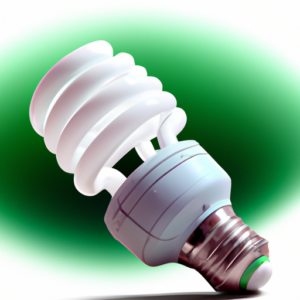Hey folks! Let’s dive into how water conservation plays a key role in sustainable architecture. As we explore the topic together, we’ll learn how innovative building designs and thoughtful water management practices can significantly reduce our environmental footprint. From rainwater harvesting to greywater recycling, the strategies we adopt today can help us create more resilient, efficient, and eco-friendly communities for the future. Ready to discover the power of smart water use in shaping a sustainable world? Let’s get started! Have you ever wondered how water conservation ties into the bigger picture of sustainable architecture? In our pursuit of healthier, greener living spaces, the role of water is often overlooked. However, water conservation is an essential component of sustainable architecture that ensures we protect one of our most vital resources while creating efficient, eco-friendly buildings.

Understanding Sustainable Architecture
Sustainable architecture is a design philosophy that seeks to minimize the negative environmental impacts of buildings. This is achieved through efficient use of resources, responsible building practices, and a focus on creating buildings that are not only functional but also environmentally friendly.
The Core Principles of Sustainable Architecture
At the heart of sustainable architecture are principles that guide the design and construction processes. These principles include:
- Resource Efficiency: Using resources, such as energy, water, and materials, in the most efficient way possible to reduce waste and preserve the environment.
- Health and Wellbeing: Ensuring that buildings promote the health and wellbeing of their occupants through good indoor air quality, natural light, and safe, non-toxic materials.
- Ecological Balance: Creating buildings that exist in harmony with their natural surroundings, promoting biodiversity, and minimizing pollution.
Why Is Water Conservation Important?
Water is a finite resource essential for all life forms. With growing populations and climate change, water scarcity is becoming a pressing global issue. By integrating water conservation into our buildings, we can help alleviate water shortages and reduce the environmental footprint of our built environment.
The Role of Water Conservation in Sustainable Architecture
Water conservation in sustainable architecture involves implementing strategies and technologies to reduce water use and manage water resources efficiently in buildings. These strategies not only help conserve water but also contribute to overall sustainability goals by reducing energy consumption and minimizing environmental impact.
Water-Efficient Design Strategies
There are several design strategies that architects and builders can employ to promote water efficiency in buildings. These strategies can be divided into two main categories: reducing water use and managing water resources.
Reducing Water Use
Reducing water use involves using water-saving fixtures, appliances, and landscaping practices to minimize water consumption. Some examples include:
- Low-flow Fixtures: Installing low-flow showerheads, faucets, and toilets to reduce water usage without compromising performance.
- Energy-Efficient Appliances: Selecting water-efficient dishwashers and washing machines that use less water while maintaining high performance.
- Efficient Landscaping: Using native and drought-resistant plants that require less water for irrigation, as well as implementing drip irrigation systems that deliver water directly to plant roots.
Managing Water Resources
Effective water management involves capturing, treating, and reusing water to maximize its use. Some strategies include:
- Rainwater Harvesting: Collecting and storing rainwater for use in irrigation, flushing toilets, and other non-potable applications.
- Greywater Recycling: Reusing water from sinks, showers, and washing machines for irrigation and other non-potable uses.
- Green Roofs and Walls: Installing vegetated roof surfaces and walls to absorb rainwater, reduce runoff, and improve insulation.
The Benefits of Water Conservation in Sustainable Architecture
Integrating water conservation measures in sustainable architecture offers numerous benefits, ranging from environmental to economic and societal advantages. Let’s break these down:
Environmental Benefits
- Reduced Water Consumption: By implementing water-efficient technologies and practices, buildings can significantly lower their water use, which helps conserve local water supplies and protect ecosystems.
- Lower Energy Use: Treating and transporting water requires energy. By reducing water use, buildings also contribute to lower energy consumption and decreased greenhouse gas emissions.
- Minimized Pollution: Effective water management practices, like rainwater harvesting and greywater recycling, can help reduce stormwater runoff and minimize water pollution.
Economic Benefits
- Cost Savings: Lower water consumption translates to reduced water bills for building owners and occupants. Additionally, water-efficient appliances and fixtures often require less maintenance, further contributing to cost savings.
- Increased Property Value: Sustainable buildings that incorporate water conservation measures are attractive to environmentally conscious buyers and tenants, potentially increasing property values and rental income.
Societal Benefits
- Enhanced Resilience: Water-efficient buildings are better equipped to handle water scarcity and drought conditions, ensuring a reliable water supply for occupants.
- Improved Public Health: By reducing water pollution and promoting the use of clean, safe water, sustainable buildings contribute to better public health outcomes.
Technologies and Innovations in Water Conservation
Technological advancements play a crucial role in water conservation within sustainable architecture. By embracing innovative technologies, we can further enhance water efficiency and promote sustainable water management.
Advanced Water-Saving Fixtures
Modern water-saving fixtures go beyond traditional low-flow options. Smart fixtures that use sensors and automation to optimize water use are becoming increasingly popular. For example, sensor-activated faucets that deliver water only when needed can significantly reduce wastage.
Smart Irrigation Systems
Smart irrigation systems use weather data and soil moisture sensors to adjust watering schedules, ensuring plants receive the right amount of water without over-irrigation. These systems can save substantial amounts of water compared to conventional irrigation methods.
On-Site Water Treatment
Installing on-site water treatment systems allows buildings to treat and reuse greywater and blackwater (wastewater from toilets). Advanced treatment processes like membrane bioreactors and ultraviolet disinfection can produce high-quality water suitable for various non-potable uses.
Water Monitoring and Management
Smart water monitoring systems can detect leaks, track water use patterns, and provide real-time data to help building occupants and managers optimize water efficiency. These systems can identify issues early, preventing water loss and reducing the need for costly repairs.
Case Studies: Water Conservation in Action
To understand the real-world impact of water conservation in sustainable architecture, let’s explore some exemplary case studies showcasing innovative water-saving strategies.
Case Study 1: The Bullitt Center, Seattle, Washington
The Bullitt Center, often referred to as the greenest commercial building in the world, integrates comprehensive water conservation measures. The building’s notable features include:
- Rainwater Harvesting System: Captures and treats rainwater for all potable and non-potable uses within the building.
- Composting Toilets: Reduces water usage by replacing traditional flush toilets with composting alternatives.
- Greywater Recycling: Treats and reuses greywater for irrigation and other non-potable applications.
Case Study 2: The Edge, Amsterdam, Netherlands
The Edge is a cutting-edge office building known for its intelligent design and sustainability measures. Water conservation strategies include:
- Smart Fixtures: Equipped with ultra-efficient water fixtures and appliances.
- Rainwater Harvesting: Utilizes rainwater for irrigation and toilet flushing.
- Green Roof: Features a green roof that reduces stormwater runoff and provides insulation.
Case Study 3: One Angel Square, Manchester, UK
One Angel Square is a highly sustainable office building that demonstrates the effectiveness of water-efficient design. Key features include:
- Rainwater Harvesting: Collects rainwater for use in irrigation and toilet flushing.
- Greywater System: Recycles greywater for non-potable purposes.
- Efficient Irrigation: Utilizes smart irrigation systems for water-efficient landscaping.

Policies and Regulations Supporting Water Conservation
Government policies and regulations play a significant role in promoting water conservation in buildings. These policies establish standards and incentives that encourage the adoption of water-efficient practices and technologies.
Building Codes and Standards
Many countries have implemented building codes and standards that mandate water-efficient fixtures and systems in new constructions and renovations. For example, the U.S. Green Building Council’s LEED certification includes water efficiency criteria that buildings must meet to achieve certification.
Incentive Programs
Various incentive programs, such as rebates and tax credits, are offered by governments and utilities to encourage the adoption of water-efficient technologies. These programs can help offset the initial costs of implementing water-saving measures.
Water Pricing and Metering
Implementing tiered water pricing structures and advanced metering infrastructure can promote water conservation by making users more aware of their water consumption and incentivizing efficient use.
Education and Outreach
Public education and outreach campaigns are essential for raising awareness about the importance of water conservation and encouraging behavioral changes. Government agencies, non-profits, and industry organizations often collaborate on these initiatives.
Challenges and Future Directions
While significant progress has been made in integrating water conservation into sustainable architecture, challenges remain. Addressing these challenges and exploring future directions can further enhance the role of water conservation in building design.
Overcoming Barriers
- Initial Costs: The initial investment required for water-efficient technologies can be a barrier for some building projects. However, long-term cost savings and incentive programs can help mitigate this challenge.
- Regulatory Hurdles: Navigating complex regulations and permitting processes for innovative water systems can be daunting. Streamlining these processes and providing clear guidelines can facilitate adoption.
- Knowledge Gaps: Limited awareness and understanding of water conservation technologies among architects, builders, and the public can hinder progress. Continuous education and training are essential for widespread implementation.
Emerging Trends
- Integrated Water Management: Future buildings may incorporate integrated water management systems that seamlessly combine rainwater harvesting, greywater recycling, and on-site treatment to maximize water efficiency.
- Net-Zero Water Buildings: Net-zero water buildings aim to achieve a balance between water consumption and water generation on-site, ensuring that buildings operate independently of external water supplies.
- Advanced Materials: Research and development in materials science can lead to the creation of advanced building materials that enhance water efficiency. For example, porous concrete can promote rainwater infiltration and reduce runoff.
- Circular Water Economy: Adopting a circular water economy approach involves designing systems that treat and reuse water multiple times within a building before it is discharged, minimizing waste and maximizing resource efficiency.

Conclusion
Water conservation plays a pivotal role in sustainable architecture, ensuring that our buildings are not only environmentally friendly but also resilient and resource-efficient. By embracing water-efficient design strategies, cutting-edge technologies, and supportive policies, we can create a more sustainable future for our built environment. Each step we take towards conserving water in our architectural practices brings us closer to a world where sustainable living becomes the norm rather than the exception. Let’s continue to innovate, educate, and collaborate to make water conservation an integral part of sustainable architecture and build a better tomorrow for all.



